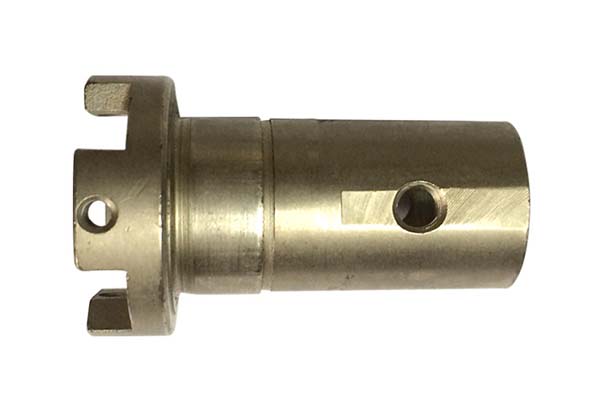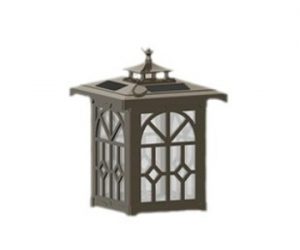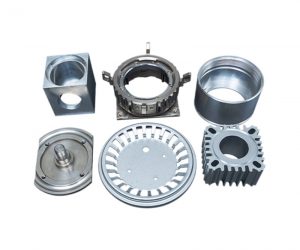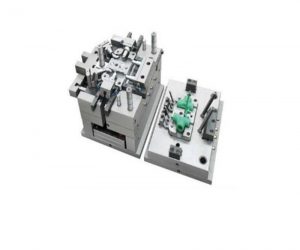1. Introduction
In the ever - evolving landscape of modern manufacturing, precision, efficiency, and complexity are the key factors that determine the success of a product and the competitiveness of a company. Multiaxis machining has emerged as a revolutionary technology that addresses these crucial aspects, playing a pivotal role in the manufacturing industry.
Yigu Technology aims to provide a comprehensive understanding of multiaxis machining. We will delve into its definition, explore the different types of multiaxis machine tools, discuss the numerous benefits it offers, and most importantly, examine its wide - ranging applications across various industries. Whether you are a manufacturer looking to enhance your production capabilities, an engineer seeking to design more complex products, or simply someone interested in the latest manufacturing technologies, Yigu Technology will serve as a valuable resource to help you gain in - depth knowledge about multiaxis machining and its significance in today's manufacturing world.
2. Definition and Basics of Multiaxis Machining
2.1 Definition
Multiaxis machining can be defined as an advanced manufacturing process that utilizes machine tools capable of simultaneous motion along multiple axes. Traditional machining often involves 3 - axis machining, which operates along the X, Y, and Z axes. These axes represent linear movements in three - dimensional space: the X - axis for horizontal movement, the Y - axis for lateral movement, and the Z - axis for vertical movement. This setup is suitable for a wide range of basic machining operations, such as milling flat surfaces, drilling straight holes, and turning cylindrical parts.
However, multiaxis machining takes it a step further. It allows for the addition of rotational axes, typically labeled as A, B, and C. The A - axis is a rotation around the X - axis, the B - axis is a rotation around the Y - axis, and the C - axis is a rotation around the Z - axis. This additional rotational freedom enables the production of parts with much more complex geometries. For instance, while a 3 - axis machine might struggle to create a part with an intricate curved surface that requires machining from multiple angles, a multiaxis machine can easily handle such a task. It can continuously adjust the orientation of the cutting tool relative to the workpiece, following complex tool paths to achieve the desired shape.
The combination of these linear and rotational axes in multiaxis machining offers a level of flexibility and precision that is unmatched by traditional 3 - axis machining. The ability to move along multiple axes simultaneously allows manufacturers to produce parts with complex geometries in a single setup, reducing production time and improving the accuracy of the final product.
3. Applications of Multiaxis Machining
3.1 Aerospace Industry
In the aerospace industry, precision and reliability are of utmost importance. Multiaxis machining has become an indispensable technology for manufacturing critical components.
Turbine Blades: Turbine blades are a prime example. These components operate in extremely harsh environments within aircraft engines, withstanding high temperatures, high pressures, and high - speed airflow. They have complex aerodynamic shapes that are crucial for efficient energy conversion. For instance, the blades need to be precisely curved to optimize the flow of hot gases, maximizing the engine's thrust while minimizing fuel consumption. Multiaxis machining allows for the creation of these intricate shapes with high precision. A study by a leading aerospace manufacturer found that using 5 - axis machining for turbine blade production reduced the error rate by up to 80% compared to traditional 3 - axis machining, resulting in a significant improvement in engine performance and reliability.
Engine Parts: Other engine parts, such as compressor disks and combustion chamber components, also benefit from multiaxis machining. Compressor disks have complex geometries with multiple slots and holes for fitting other components. Multiaxis machining can accurately machine these features in a single setup, reducing the need for multiple operations and potential assembly errors. In the case of combustion chamber components, the ability to create smooth internal surfaces and precise fuel injection ports is essential for efficient combustion. Multiaxis machining enables the production of these parts with the tight tolerances required to ensure optimal engine performance.
Structural Frames: Aerospace structural frames must be lightweight yet extremely strong to withstand the stresses of flight. Multiaxis machining can create complex internal structures within the frame components, such as honeycomb - like patterns, which increase strength while minimizing weight. For example, in the construction of aircraft fuselage frames, multiaxis - machined components can be precisely shaped to fit together perfectly, reducing the need for additional fasteners and improving the overall structural integrity of the aircraft.
3.2 Automotive Industry
The automotive industry is another sector that has greatly benefited from multiaxis machining.
Engine Components: Components like engine blocks, cylinder heads, and crankshafts are critical for the performance of an automobile engine. Engine blocks need to have precisely machined cylinders to ensure proper piston movement and combustion. Multiaxis machining can achieve the tight tolerances required for these cylinders, improving engine efficiency and reducing emissions. A research by an automotive research institute showed that engines with components machined using multiaxis technology had a 10 - 15% increase in fuel efficiency compared to those with conventionally - machined components. Cylinder heads also require complex port geometries for efficient air - fuel mixture intake and exhaust gas release. Multiaxis machining can accurately create these ports, enhancing engine power output.
Transmission Parts: Transmission parts, such as gears and shafts, need to be precisely machined for smooth power transfer. Gears with complex tooth profiles can be produced with high precision using multiaxis machining. This ensures quiet operation, reduced wear, and improved overall transmission efficiency. For example, in high - performance sports cars, the precise machining of transmission parts using multiaxis technology can enhance the car's acceleration and top - speed capabilities.
Custom Body Panels: With the increasing demand for unique and aerodynamic vehicle designs, custom body panels are becoming more popular. Multiaxis machining allows automotive manufacturers to create complex and stylish body panel shapes. These panels can be designed to improve the vehicle's aerodynamics, reducing drag and improving fuel efficiency. For instance, some luxury car manufacturers use multiaxis - machined body panels to create a more streamlined look while also enhancing the car's handling characteristics.
3.3 Medical Industry
In the medical field, Yigu Technology multiaxis machining plays a vital role in the production of life - saving and quality - of - life - improving devices.
Implants: Implants such as hip replacements, knee implants, and dental implants need to be biocompatible and precisely shaped to fit the patient's anatomy. Multiaxis machining can create implants with complex geometries that closely match the natural shape of the body part being replaced.
Surgical Instruments: Surgical instruments, such as forceps, scalpels, and endoscopes, require high - precision machining to ensure their functionality. Multiaxis machining can create complex shapes and sharp edges on surgical instruments.
Custom Devices: Custom - made medical devices, such as prosthetics and orthotics, are designed to meet the specific needs of individual patients. Multiaxis machining allows for the creation of personalized devices that fit the patient's body perfectly.
3.4 Other Industries
Eletrónica: In the electronics industry, multiaxis machining is used for manufacturing components such as heat sinks, connectors, and enclosures. Heat sinks need to have complex fin structures to effectively dissipate heat from electronic components. Multiaxis machining can create these fins with high precision, ensuring efficient heat transfer. For example, in high - performance computers and servers, multiaxis - machined heat sinks can keep the processors cool, preventing overheating and improving the system's stability.
Consumer Products: Multiaxis machining is also used in the production of consumer products. For example, in the manufacturing of high - end watches, the complex shapes of watch cases and dials can be created using multiaxis machining. This allows for the production of unique and stylish designs. In the production of mobile phone casings, multiaxis machining can create smooth and precise edges, enhancing the overall aesthetics of the device.
Mold and Die Manufacturing: Mold and die manufacturing relies heavily on multiaxis machining. Molds and dies are used to produce a wide range of products, from plastic parts to metal components. Multiaxis machining can create the complex cavities and cores within molds and dies with high precision. This ensures that the products produced using these molds and dies have the correct shape and dimensions. For example, in the production of injection - molded plastic products, the precise machining of molds using multiaxis technology can reduce the occurrence of defects such as warping and shrinkage.
Precision Machinery: In the precision machinery industry, multiaxis machining is used to manufacture components for machine tools, robots, and measuring instruments. These components require high precision to ensure the accurate operation of the machinery. For example, the joints and links in industrial robots need to be precisely machined to ensure smooth and accurate movement. Multiaxis machining can create these components with the tight tolerances required for high - performance operation.
4. Comparison Table: Multiaxis Machining vs Traditional Machining
To better understand the significance of multiaxis machining, let Yigu Technology compare it with traditional 3 - axis machining in a tabular format:
| Comparison Aspect | Traditional 3 - Axis Machining | Multiaxis Machining |
| Precision | Limited to linear movements, which may result in less precise machining for complex geometries. For example, when machining a curved surface, the step - over distance between tool paths can be relatively large, leading to a less smooth finish. The precision is typically in the range of ±0.1 - 0.5 mm. | Allows for high - precision machining of complex parts due to simultaneous movement along multiple axes. It can achieve much smaller step - over distances, resulting in a smoother surface finish. Precision can be as high as ±0.001 - 0.01 mm, which is crucial for industries like aerospace and medical. |
| Production Efficiency | Usually requires multiple setups for complex parts. Each setup adds time for workpiece positioning, tool changes, and calibration. For instance, if a part needs machining on multiple sides, it has to be re - positioned and clamped several times. This leads to longer production times, especially for parts with complex shapes. | Enables multiple operations to be performed in a single setup. By continuously adjusting the tool's orientation, it can complete machining on different surfaces of a complex part without the need for frequent re - positioning. This significantly reduces production time. In some cases, it can reduce the production time by 30 - 50% compared to traditional machining for complex parts. |
| Cost | The initial investment in 3 - axis machines is relatively lower. However, the need for multiple setups, longer production times, and potentially more manual labor can increase the overall production cost in the long run. Additionally, the higher error rate for complex parts may lead to more scrap and rework, further adding to the cost. | The initial cost of multiaxis machines is higher due to their complex design and advanced technology. But in the long term, they can lead to cost savings. The reduction in production time, setup times, and labor costs, as well as the decrease in material waste, can offset the higher initial investment. For example, a study showed that for a medium - sized manufacturing company producing complex parts, using multiaxis machining reduced the overall production cost by 20 - 30% over a period of one year. |
| Complexity of Machining | Suitable mainly for simple parts with basic geometries, such as flat surfaces, simple holes, and regular shapes. It struggles to create parts with complex curves, undercuts, or angled features. | Ideal for producing highly complex parts with intricate geometries. It can handle parts with multiple angles, complex curves, and internal features that are difficult or impossible to machine with traditional methods. For example, it can create a turbine blade with a single setup, while traditional machining would require multiple setups and more complex operations. |
| Tool Life | The fixed orientation of the cutting tool in traditional machining can cause uneven wear on the tool. This is because the tool is constantly cutting at the same angle, leading to higher stress on certain parts of the tool. As a result, the tool may need to be replaced more frequently, increasing tool costs. | The ability to change the cutting angle and tool path in multiaxis machining distributes the cutting forces more evenly across the tool. This reduces the wear and tear on the tool, extending its lifespan. Tools in multiaxis machining can last 2 - 3 times longer than in traditional machining for similar operations. |
5. Conclusion
Multiaxis machining, with its ability to enable machine tools to move simultaneously along multiple axes, has emerged as a game - changer in the manufacturing industry. It represents a significant leap forward from traditional 3 - axis machining, opening up new possibilities for the production of highly complex parts.
The numerous benefits of multiaxis machining are hard to overlook. In terms of precision, it far surpasses traditional machining methods, achieving tolerances as low as ±0.001 - 0.01 mm. This high level of precision is crucial for industries such as aerospace and medical, where the performance and reliability of components are of utmost importance. For example, in aerospace, the precise machining of turbine blades using multiaxis technology ensures optimal engine performance, reducing fuel consumption and enhancing flight safety.
Productivity is another area where multiaxis machining shines. By allowing multiple operations to be completed in a single setup, it significantly reduces production time. In some cases, it can cut production time by 30 - 50% for complex parts compared to traditional machining. Yigu Technology efficiency is a boon for both prototyping, where speed is often essential to quickly bring new products to market, and large - scale production, where high - volume output is required.
6. FAQs
6.1 What is the most significant benefit of multiaxis machining?
The most significant benefit of multiaxis machining is its ability to produce highly complex parts with high precision and efficiency. By allowing simultaneous movement along multiple axes, it enables the creation of intricate geometries that are difficult or impossible to achieve with traditional 3 - axis machining. Yigu Technology reduces the need for multiple setups and manual intervention. For example, in the aerospace industry, multiaxis machining can produce turbine blades with complex aerodynamic shapes in a single setup, which significantly increases productivity and part quality. It also ensures that each part is produced with tight tolerances, making it suitable for industries where component performance and reliability are crucial.
6.2 How do I choose the right multiaxis machine for my needs?
When choosing a multiaxis machine, Yigu Technology several factors need to be considered. First, assess the complexity of the parts you will be machining. If you deal with highly complex geometries, a 5 - axis or higher - axis machine may be necessary. For simpler parts, a 3 - axis or 4 - axis machine could be sufficient. Second, consider the precision requirements of your work. Different multiaxis machines have varying levels of precision, so choose one that meets your tolerance specifications. Third, think about your production volume. Larger - scale production may require a machine with higher productivity capabilities. Finally, your budget plays a crucial role. Multiaxis machines can vary significantly in price, so find a balance between your requirements and what you can afford.



